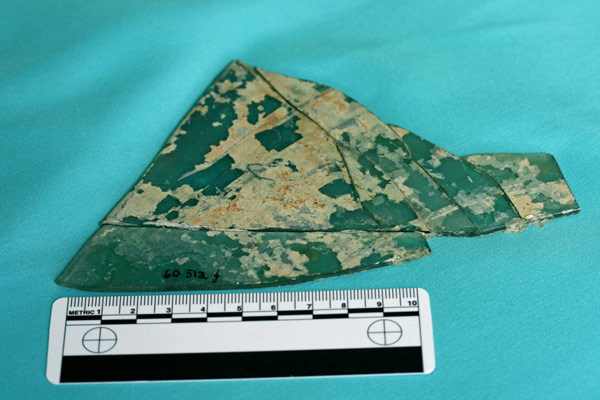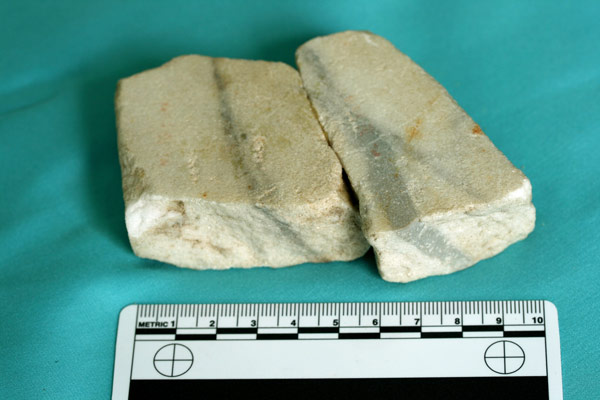This glass window pane was found in the bath house excavations by Michael Green, Roman Glass 1959 and is one of many pieces of window glass found all over Godmanchester. The bath house which is on Pinfold Lane dates from the early second century and excavations show that it was constructed to a sophisticated level of service for the local inhabitants and indeed for the many travellers passing through the town.
Roman Glass 1959 and is one of many pieces of window glass found all over Godmanchester. The bath house which is on Pinfold Lane dates from the early second century and excavations show that it was constructed to a sophisticated level of service for the local inhabitants and indeed for the many travellers passing through the town.
It's worth remembering that a Roman bath house was more than a place to bathe in, but somewhere to socialise. You would expect there to be local traders selling food within its walls, certainly trays of bead rolls and cakes or biscuits sweetened with honey and perhaps even savouries - Roman soldiers were particularly fond of sausages and meat pies as indeed were the rest of the population. Very likely scented oils were also commercially available to bathers using the natural perfumes from plants grown locally such as lavender, roses and rosemary and some expensive perfumes imported and brought by mule train up Ermine Street, the main trading route between London and Hadrian's Wall.
This piece of mainly green glass is cast for the shape of the window, and probably ordered by the builders and brought in from outside Godmanchester. Glass was ideal for the bath house, allowing light into the rooms while retaining heat. The general consensus of opinion seems to be that in Roman Britain cast window glass dominates in the first and second centuries and gradually gives way to blown window glass in the late third and fourth centuries. The distribution of window glass fragments in the town indicates that other more expensive residential or official buildings in the town would also have used glass to cover the windows.
We also have evidence of marble used to line the walls and baths. There is Hopton Wood marble from Roman Marble Derbyshire and Cumbria. and Purbeck marble from south east Dorset, has been used to line the cold bath. Altogether grander is the Italian marble, shown here, probably brought along the river to Godmanchester by shallow draught boat, to line the walls of the hot room.
Roman Marble Derbyshire and Cumbria. and Purbeck marble from south east Dorset, has been used to line the cold bath. Altogether grander is the Italian marble, shown here, probably brought along the river to Godmanchester by shallow draught boat, to line the walls of the hot room.
There was some wooden flooring in the bath house. Other rooms used a mix of tiles and mosaic flooring with decorated tiling on the walls and painted wall plaster.
Items from the Museum of Archaeology and Anthropology, Cambridge.
Photo copyright Godmanchester Roman Film Project.